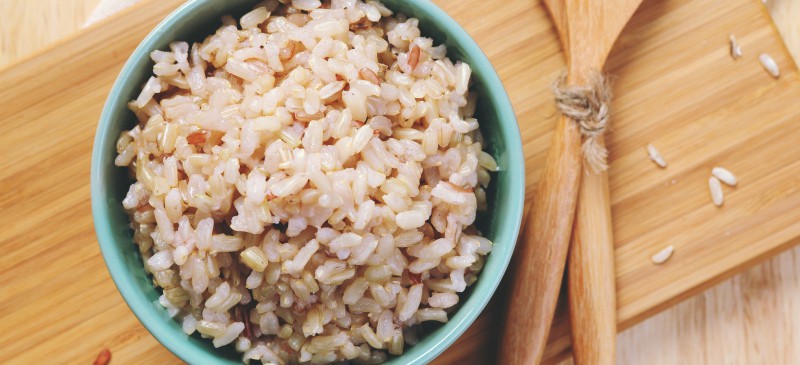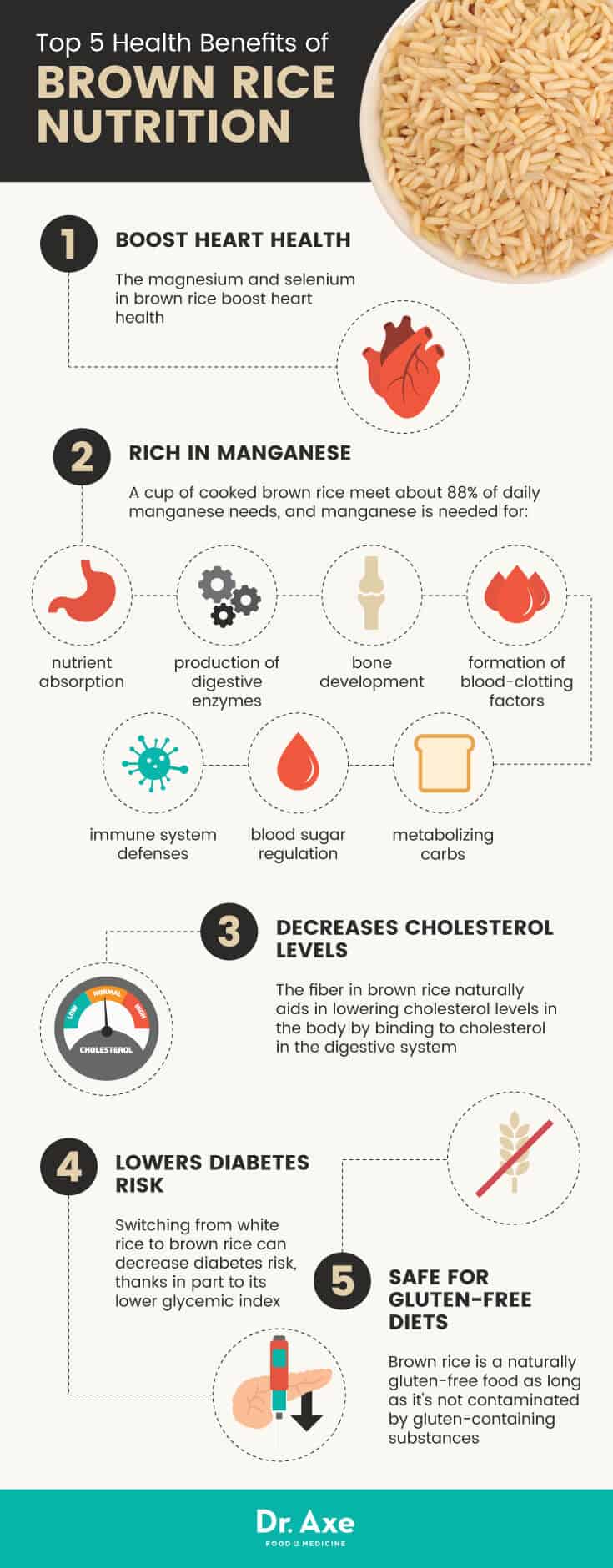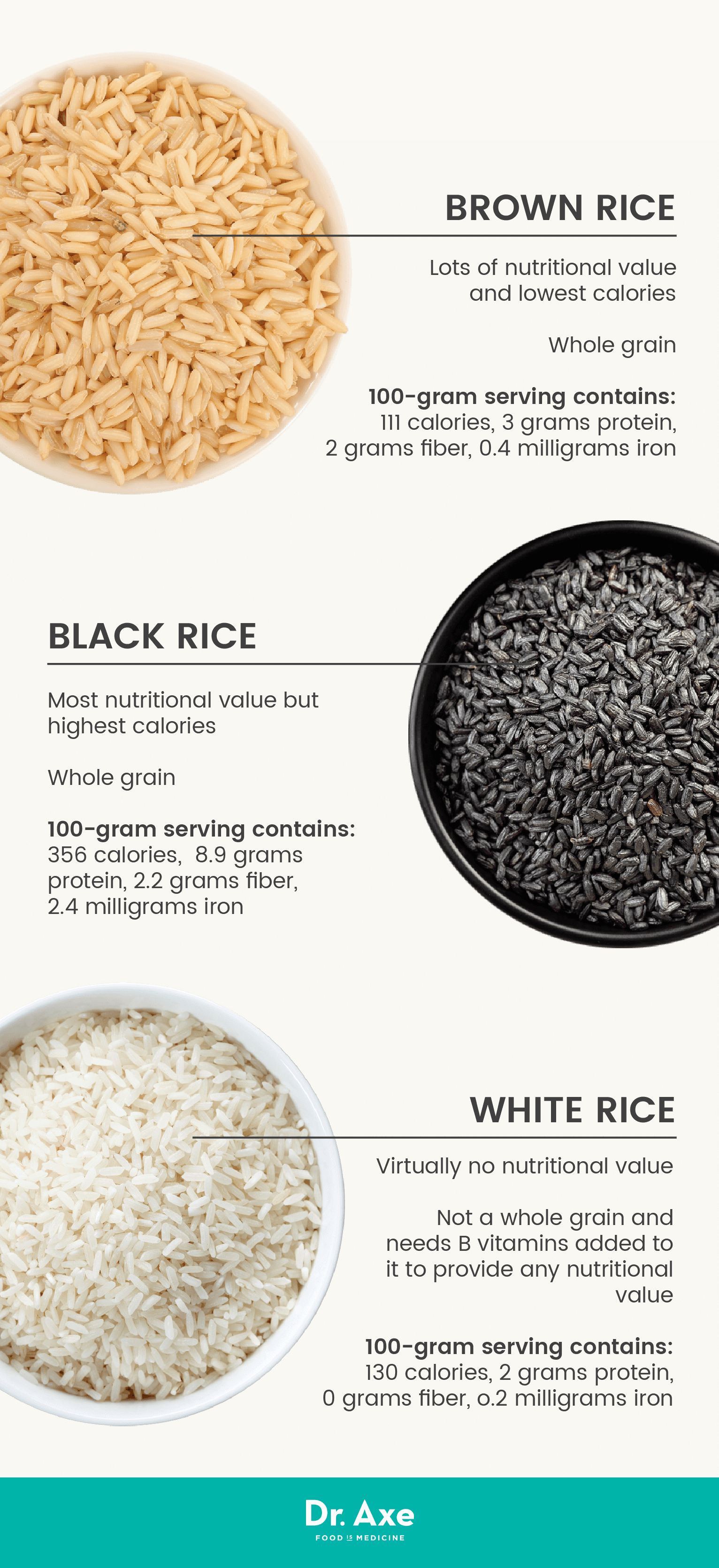This Dr. Axe content is medically reviewed or fact checked to ensure factually accurate information.
With strict editorial sourcing guidelines, we only link to academic research institutions, reputable media sites and, when research is available, medically peer-reviewed studies. Note that the numbers in parentheses (1, 2, etc.) are clickable links to these studies.
The information in our articles is NOT intended to replace a one-on-one relationship with a qualified health care professional and is not intended as medical advice.
This article is based on scientific evidence, written by experts and fact checked by our trained editorial staff. Note that the numbers in parentheses (1, 2, etc.) are clickable links to medically peer-reviewed studies.
Our team includes licensed nutritionists and dietitians, certified health education specialists, as well as certified strength and conditioning specialists, personal trainers and corrective exercise specialists. Our team aims to be not only thorough with its research, but also objective and unbiased.
The information in our articles is NOT intended to replace a one-on-one relationship with a qualified health care professional and is not intended as medical advice.
Brown Rice Nutrition May Lower the Risk of Diabetes & Heart Disease
March 14, 2017

In moderation, brown rice can be a very nutritious gluten-free carbohydrate and healthy rice choice overall. Brown rice nutrition doesn’t have too many calories per serving, but the nutrient content certainly is up there, whether we’re talking brown rice eaten on its own or brown rice protein powder. Rice nutrition is actually an important topic since about half of the world’s inhabitants (especially East and Southeast Asia) is completely reliant on rice as a staple food in their daily diets. (1)
Is rice healthy? The answer is not always. Refined carbohydrates like white rice are basically fake foods and do nothing to promote the health of your body. So is white rice good for you? No, it’s stripped of its nutrients, leaving pretty much nothing but carbohydrates that enter the bloodstream like an injection of sugar.
Brown rice nutrition, on the other hand, is loaded with vitamins and minerals as well as fiber and protein to balance the carbs in brown rice. Scientific studies has even shown that brown rice nutrition can reduce the risk of developing diabetes as well as heart problems. It’s also a safe choice for anyone following a gluten-free diet.
5 Health Benefits of Brown Rice Nutrition
1. Boost Heart Health
Brown rice has a large amount of plant lignans, which help form plant cell walls. These lignans are also believed to protect humans against various diseases, including heart disease. (2)
Another great thing that brown rice is high in? Magnesium. This mineral is absolutely vital to heart health, and magnesium deficiency can be harmful on many levels. For starters, magnesium helps maintain normal heart rhythm, and scientific studies show that heart health in both men and women is significantly improved with an increased dietary intake of magnesium. Studies also demonstrate that getting your magnesium from your diet rather than supplements is likely preferable, especially for people who have already suffered heart attacks in the past. (3)
Overall, both animal and human studies have confirmed that brown rice can decrease cardiovascular risk factors and has cardio-protective effects. (4, 5) Brown rice is also high in selenium, another major heart-boosting nutrient.
2. Rich in Manganese
One of the most impressive attributes of brown rice nutrition is its extremely high manganese content per serving. A cup of cooked brown rice fulfills almost all of our daily manganese needs at 88 percent. Manganese isn’t talked about as much as some other nutrients, but it’s extremely important to optimal health.
It’s an important trace mineral needed for many vital functions, including nutrient absorption, production of digestive enzymes, bone development, formation of blood-clotting factors and immune system defenses. If you don’t get enough manganese in your diet, it can put you at risk for a lot of unwanted health problems, including weakness, infertility, bone malformation and seizures. This nutrient found abundantly in brown rice also helps the body regulate blood sugar, absorb calcium properly and metabolize carbohydrates. So having manganese in brown rice actually helps you to metabolize it better. (6)
3. Decreases Cholesterol Levels
Whole grain foods like brown rice contain both fiber and bran. This is why brown rice offers so many more health benefits than white rice — it still has its bran content.
Studies have shown that the rice bran and fiber contained in brown rice may be able to lower unhealthy cholesterol levels, particularly LDL cholesterol. The fiber in brown rice naturally aids in lowering cholesterol levels in the body by binding to cholesterol in the digestive system, which causes it to be excreted by the body. (7)
Related: Rice Cakes: Are They Healthy? Pros, Cons + How to Use

4. Lowers Diabetes Risk
Scientific research has shown that opting for brown rice instead of white rice may actually decrease your risk of developing diabetes. Refined carbs like white rice are not a friend of diabetics (or of anyone really) because they raise blood sugar so quickly and easily.
A 2010 study out of Harvard School of Public Health revealed that if you consume a little over two servings of white rice (about 12 ounces) per week, making the switch to brown rice could decrease type 2 diabetes risk by an estimated 16 percent. This makes sense since white rice has a significantly higher glycemic index compared to brown rice. The researchers also pointed out that brown rice eaters tended to be healthier overall, eating more whole grains in general and exercising more frequently. Brown rice lovers were also less likely to smoke cigarettes or have diabetes running in their families. (8)
This isn’t to say that white rice causes diabetes, but brown rice definitely appears to lower the risk of developing diabetes, thus making it a better choice for anyone following a diabetic diet plan.
5. Safe for Gluten-Free Diets
Brown rice is often a go-to carb for many gluten-free eaters. Similar to oatmeal, brown rice is a naturally gluten-free food as long as it’s not contaminated by gluten-containing substances. (9) Many people who avoid gluten in their diets can easily fall short on fiber and the beneficial B vitamins found in whole grains. The good news here is that brown rice provides lots of fiber and B vitamins minus the gluten.
What Is Brown Rice?
Rice is an edible, starchy cereal grain that’s naturally gluten-free. The scientific name for rice is Oryza sativa. Brown rice nutrition facts are quite impressive and definitely beat white rice nutrition any day. When rice kernels are harvested, they’re enclosed in their outmost layer known as the hull or husk. Brown rice only has the hull of the rice kernel removed so it maintains the grand majority of its inherent nutritional value. When brown rice is further processed to remove the bran as well, then it becomes white rice and loses most of its nutrients as a result of this processing.
When did people first start eating rice? Cultivation of rice is said to have begun about 6,000 years ago in China, while archeologists have found rice seeds about 9,000 years old. Rice has its longest history in Asia where it still continues to be a staple to this day. (10) Fast-forward to current times, and rice is popular around the world and has a place in such a large variety of cuisines from Asian to Mexican to Indian, just to name a few.
Is brown rice healthy? Highlights of brown rice nutrition include high amounts of manganese, selenium, magnesium, phosphorus and B vitamins. It also offers a substantial amount of fiber and protein per serving. What about the calories in brown rice? They’re there, but they’re not too high per serving. A half cup of cooked brown rice only contains a little over 100 calories, and brown rice nutrition is plentiful.
Related: Is Jasmine Rice Nutrition Healthy? Facts, Benefits, Recipes & More
Brown Rice Nutrition Facts
A cup (8 ounces) of cooked brown rice contains about: (11)
- 216 calories
- 44.8 grams carbohydrates
- 5 grams protein
- 1.8 grams fat
- 3.5 grams fiber
- 1.8 milligrams manganese (88 percent)
- 19.1 micrograms selenium (27 percent)
- 83.9 milligrams magnesium (21 percent)
- 162 milligrams phosphorus (16 percent)
- 3 milligrams niacin (15 percent)
- 0.3 milligram vitamin B6 (14 percent)
- 0.2 milligram thiamine (12 perecent)
- 0.2 miligram copper (10 percent)
- 1.2 milligrams zinc (8 percent)
- 0.6 milligrams pantothenic acid (6 percent)
- 0.8 milligram iron (5 percent)
- 7.9 micrograms folate (2 percent)
- 19.5 milligrams calcium (2 percent)
- 83.9 milligrams potassium (2 percent)
Brown Rice vs. Black Rice vs. White Rice
When it comes to white rice vs brown rice, brown rice nutrition definitely wins since brown rice gets polished (stripped of its nutrients) to become white rice. (12) Unless white rice is enriched, it really doesn’t offer the consumer much of anything in terms of nutrients so white rice nutrition is basically nonexistent. However, the less popular black rice aka “forbidden rice” is actually even more impressive than brown rice nutrition, but it does contain a lot more calories for the same serving.
Here’s how the different types of rice differ in terms of nutrient content when we compare a 100-gram cooking serving of each kind:
- Brown rice: 111 calories, 3 grams protein, 2 grams fiber, 0.4 milligrams iron
- White rice: 130 calories, 2 grams protein, 0 grams fiber, o.2 milligrams iron
- Black rice: 356 calories, 8.9 grams protein, 2.2 grams fiber, 2.4 milligrams iron
All rice is naturally gluten-free, but brown and black rice as well as wild and red rice are also considered to be whole grains. These whole grain rices are naturally high in B vitamins and other nutrients. White rice, however, has to have B vitamins added into it in order to provide any white rice nutrition. (13)

Brown Rice Recipes, Buying Tips and How to Cook
If brown rice is anything in the kitchen, it’s versatile. You can add it to soups, stews, stir-fries and salads. You also use it to make homemade sushi, or you can make it the backdrop to a healthy protein like wild-caught salmon or a grass-fed steak. And don’t forget about dessert because brown rice can also be the star of a healthy rice pudding recipe.
Some delicious and super-healthy brown rice recipes I love include:
You can also purchase brown rice protein powder to reap brown rice benefits in homemade shakes and smoothies.
Buying Brown Rice
Brown rice is easy to find at any grocery store or health store. I recommend buying organic, which some experts say can reduce the arsenic content of brown rice. Since brown rice still has the healthy natural oils of the germ, it also has a shorter shelf life compared to white rice. Always store brown rice in an airtight container away from heat, light and moisture, which typically gives it a shelf life of at least six months. If you want your brown rice to last even longer, you can store it in an airtight container in the refrigerator or the freezer. If you choose to buy brown rice in bulk, try to opt for a store source that has a high turnover rate.
How to Cook Brown Rice
Before cooking brown rice, at the least you always should make sure to rinse it and remove any debris. I also highly recommend soaking and sprouting your brown rice before cooking it, which has been found to decreases allergens and phytic acid content while increasing the absorption of nutrients. (14) Soak brown rice for about 12 hours and let it sprout for no more than one to two days. (15) You can also buy already sprouted brown rice at some stores or online.
Brown rice generally needs more cooking time than white rice. It’s best to cook brown rice like pasta. Instead of following cooking instructions on rice packages, cook it by adding much more water. (Kind of how you would cook pasta — six to 10 parts water per one part rice.) Scientists proved this method could reduce arsenic levels, especially inorganic arsenic, in rice by up to 40 percent. It could, however, also lower levels of some rice nutrients too. (16) I also want to note that researchers from the U.K. found that cooking rice in a coffee pot reduced arsenic by up to 85 percent. (17)
Brown Rice Precautions
Brown rice is considered safe for the majority of people in normal food amounts. (18) I do suggest not going overboard in your brown rice consumption because arsenic in rice is a valid concern. Unfortunately, the Food and Agriculture Organization of the United Nations warns that, “Rice in particular can take up more arsenic than other foods and due to its high consumption can contribute significantly to arsenic exposure.” (19)
A Consumer Reports stud revealed that there were measurable amounts of arsenic in virtually every one of the 60 varieties of rice it tested. It also found that rice cereal and rice pasta can have much more inorganic arsenic so it’s important to limit rice product intake in children, especially since rice cereals are commonly fed to young children. (20)
Since rice is one of the most popular gluten-free alternatives on the market today, this finding is definitely concerning. However, Consumer Reports advises shoppers to choose brown rice from California, India or Pakistan because brown rice from these areas tends to have about a third less inorganic arsenic than other brown rices. (21)
The Food and Drug Administration has yet to set set a federal limit for arsenic in rice and rice products. According to the FDA, buying organic brown rice doesn’t equate to lower arsenic levels since arsenic is absorbed by plants regardless of growing methods. (22) However, I do recommend opting for organic brown rice when you can.
It’s possible to have a brown rice allergy. If you have any food allergy symptoms after consuming brown rice, discontinue consumption and see an allergist.
Final Thoughts on Brown Rice Nutrition
- In moderation, brown rice can be a healthy, nutrient-rich addition to the diet.
- It’s frustrating that brown rice contains arsenic, but thankfully there are ways to reduce arsenic in rice, like cooking rice in a lot of water.
- You should also try to purchase organic brown rice grown in areas that have been found to produce rice with less arsenic like California, India or Pakistan.
- Soaking and sprouting brown rice can get rid of unhealthy elements while increasings its nutrient availability.
- It’s inexpensive to buy brown rice, and it is extremely easy to use.
- Brown rice nutrition is very impressive and offers many health benefits, including reducing the risk of heart disease, high cholesterol and diabetes.













